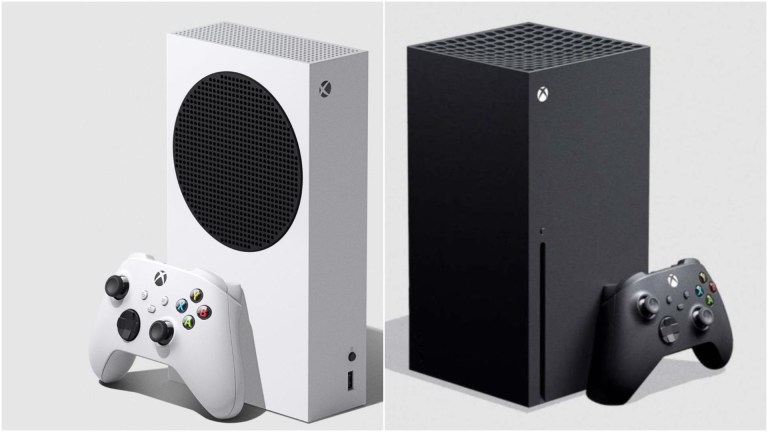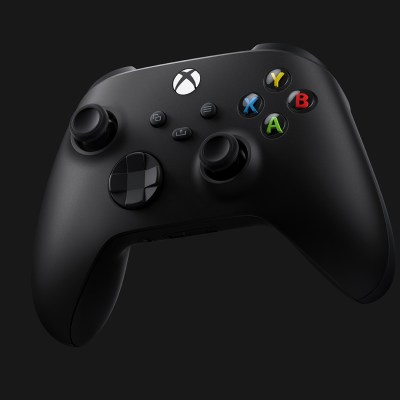Xbox Series S vs. Xbox Series X: What’s the Difference?
Is the Xbox Series S a viable alternative to the Xbox Series X? Here's what you need to know:

The reveal of the Xbox Series S didn’t exactly catch anyone by surprise (we’ve seen roughly three different Xbox Series S leaks in as many months), but the specifics of Microsoft’s “other” next-gen console have raised some fascinating questions about which Xbox you should buy in November.
Your decision will ultimately come down to a variety of personal preferences, but choosing between the Xbox Series S and the Xbox Series X first requires you to understand some of the fundamental differences between the two devices. While it’s true that we’re still waiting for Microsoft to reveal the Xbox Series S’ full specs, we know enough about the Xbox Series S primary features in order to give you a rough idea of what console will offer.
So that’s exactly what we’re going to do today. Based on what we currently know, these are the major differences between the Xbox Series S and the Xbox Series X:
The Xbox Series S Does Not Have a Disc Drive
This will seemingly be the biggest design difference between the Xbox Series S and the Xbox Series X in the minds of most potential consumers.
The Xbox Series S is an all-digital console, which means that it will not ship with a disc drive. That also means that you will not be able to use the Xbox Series S to play Blu-ray discs, modern video game discs, or discs for backward compatible Xbox titles. You will, however, be able to use it to play any compatible digital games, access any compatible media streaming service, or play any games featured in the Xbox Game Pass library.
The value of such a console depends on your needs, but it should be noted that one of the Xbox Series X’ biggest selling points is its extensive backward compatibility functionality. The Xbox Series S’ all-digital format means that your ability to access older Xbox titles will be severely limited.
The Xbox Series S Has A Much Smaller SSD
We’re still waiting on Microsoft to confirm some of these specifics, but initial reports indicate that the Xbox Series S will ship with a 512GB SSD while the Xbox Series X will feature a 1TB NVMe SSD.
The extra storage space offered by the Xbox Series X could end up being a big deal (especially if download continue to grow in the next-generation), but if the Xbox Series S supports expandable storage (which it likely will), then its smaller SSD could just prove to be a minor inconvenience.
The bigger issue here could be the “quality” of the Xbox Series S SSD. While Microsoft isn’t leaning as heavily into the functionality of their next-gen SSD as Sony has been with the PlayStation 5, it will be interesting to see whether or not the Xbox Series S SSD is roughly comparable to the Xbox Series X SSD from a performance perspective.
Xbox Series S Will Not Support Native 4K Gaming
According to a seemingly reliable series of leaks, the Xbox Series S will only support upscaled 4K games while the Xbox Series X will feature native 4K and 8K support.
It’s honestly a little difficult to accurately convey how big of a difference that will make without knowing the Xbox Series S’ full specs. For that matter, the difference will also come down to the quality of your display and your personal preferences. If you’re not playing on a higher-end 4K display (or better), then you may not notice much of a difference when the console’s launch in November.
The real question here, though, is “What will Xbox Series S games look like in 3-4 years?” With 4K gaming quickly becoming the industry standard, the difference between the Xbox Series S upscaling and the Xbox Series X native display abilities will almost certainly become more pronounced as time goes on.
The Xbox Series S Could be Significantly Cheaper than the Xbox Series X
At just $299, we can fairly safely predict that the Xbox Series S will be the cheapest next-gen console by a potentially considerable margin.
Honestly, that $299 price point is simply shocking. While the optimistic projections suggested that the cheapest next-gen console could check-in at under $300, most reports hinted that even low-end models would likely cost $349 or more.
Granted, Microsoft has made quite a few sacrifices to the Xbox Series S’ design in order to reach that price point, but that could prove to be a very attractive figure for those who are more interested in continuing to play the latest games (via Game Pass, xCloud, and other digital avenues, of course) than they are in accessing the highest-end gaming console on the market.
The Xbox Series S is 60% Smaller than the Xbox Series X
While the Xbox Series S is clearly a technologically inferior console in many respects, there’s something to be said about its significantly smaller size as a potential selling point.
The Xbox Series S is reportedly 60% smaller than the Xbox Series X. While the Xbox Series X isn’t necessarily an unusually large gaming console, it’s easy enough to imagine that this console’s small size will be incredibly appealing to those who demand less from their gaming consoles and would thus look for a “budget” alternative in the first place.
Whereas the PlayStation 5’s all-digital design is roughly similar to the “base” model, the Xbox Series S boasts an entirely different design that we’d argue turns some of the console’s potential disadvantages into strengths.


